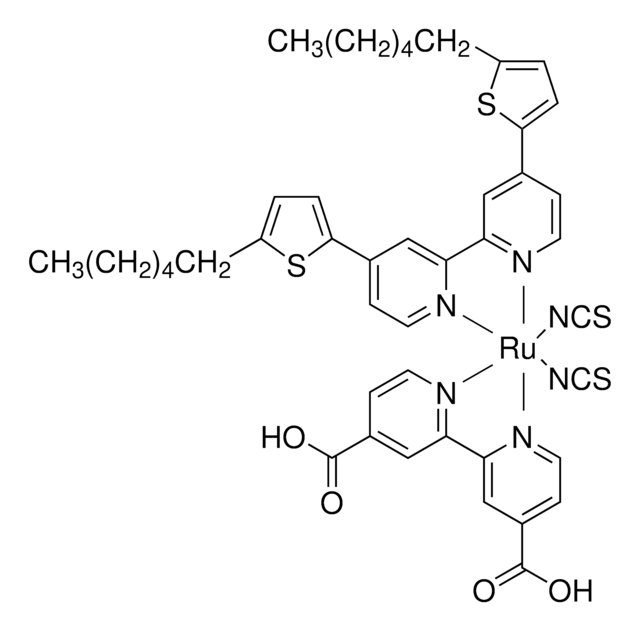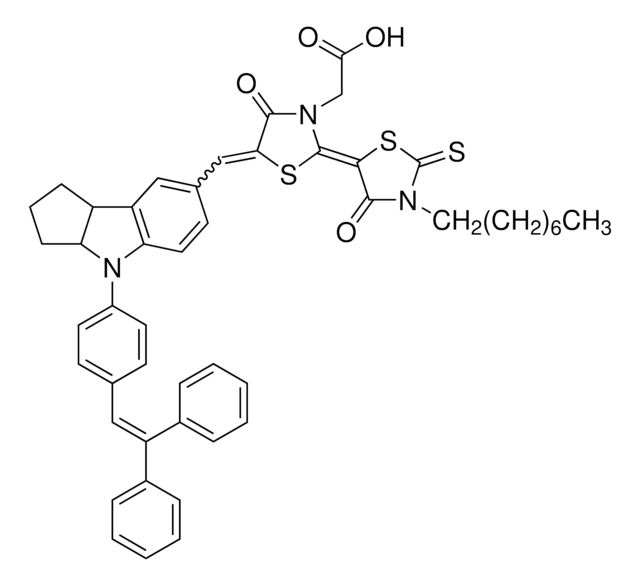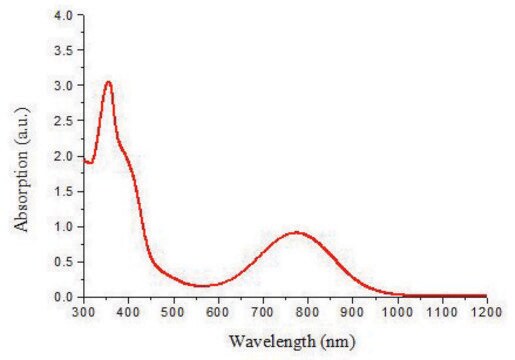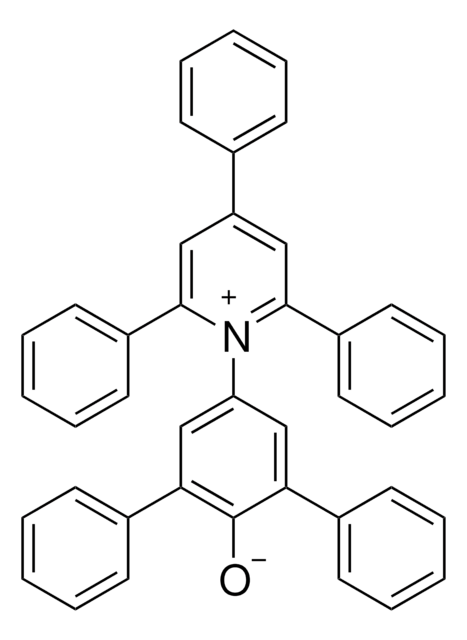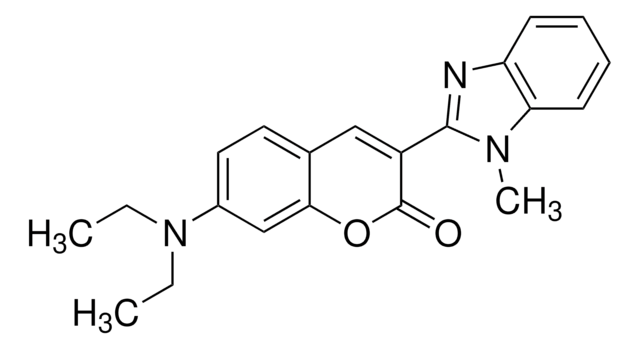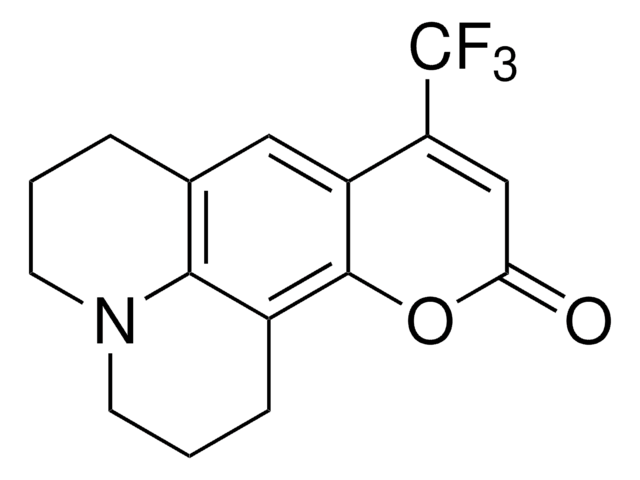745944
D102 Dye
95% (HPLC)
About This Item
Empfohlene Produkte
Assay
95% (HPLC)
Form
powder
mp (Schmelzpunkt)
238-243 °C
λmax
499 nm in DMF
SMILES String
S=C(S/C1=C\C(C=C2)=CC3=C2N(C4=CC=C(C=C(C5=CC=CC=C5)C6=CC=CC=C6)C=C4)C7C3CCC7)N(CC(O)=O)C1=O
InChI
1S/C37H30N2O3S2/c40-35(41)23-38-36(42)34(44-37(38)43)22-25-16-19-33-31(21-25)29-12-7-13-32(29)39(33)28-17-14-24(15-18-28)20-30(26-8-3-1-4-9-26)27-10-5-2-6-11-27/h1-6,8-11,14-22,29,32H,7,12-13,23H2,(H,40,41)/b34-22-
InChIKey
XGMCROHUTRXETK-VQNDASPWSA-N
Verwandte Kategorien
Allgemeine Beschreibung
Anwendung
Cell area: 0.25 cm2 (0.5 cm × 0.5 cm)
TiO2 Thickness: 5 μm
TiO2: screen printing
Electrolyte: 0.1 M LiI; 0.05 M I2; 0.6 M Dimethyl propylimidazolium
Iodide; 0.05 M t-Butylpyridine in 3-Methoxypropionitrile
Light source: AM1.5
Counter Electrode: Pt/Cr spatter glass
Dye adsorption: 30 °C/ in 3 hr. (t-BuOH/acetonitrile soln.)
Rechtliche Hinweise
Hier finden Sie alle aktuellen Versionen:
Analysenzertifikate (COA)
Die passende Version wird nicht angezeigt?
Wenn Sie eine bestimmte Version benötigen, können Sie anhand der Lot- oder Chargennummer nach einem spezifischen Zertifikat suchen.
Besitzen Sie dieses Produkt bereits?
In der Dokumentenbibliothek finden Sie die Dokumentation zu den Produkten, die Sie kürzlich erworben haben.
Kunden haben sich ebenfalls angesehen
Artikel
Dye-sensitized solar cells (DSCs) are 3rd generation solar cells combining the promise of high efficiency with low production costs.
While dye sensitization as the basis for color photography has been accepted for a very long time,1 attempts to use this principle for the conversion of solar light to electricity generally had resulted only in very low photocurrents, below 100 nA/cm
Unser Team von Wissenschaftlern verfügt über Erfahrung in allen Forschungsbereichen einschließlich Life Science, Materialwissenschaften, chemischer Synthese, Chromatographie, Analytik und vielen mehr..
Setzen Sie sich mit dem technischen Dienst in Verbindung.
![2-((E)-5-(1,2,3,3a,4,8b-Hexahydro-4-(4-(2,2-diphenylvinyl)-phenyl)-cyclopenta[b]indol-7-yl)-methyl)-3-ethyl-5-(3-carboxymethyl-4-oxo-thazolidin-2-yliden)-rhodanin 98% (HPLC)](/deepweb/assets/sigmaaldrich/product/structures/385/198/55d7638f-f6fb-4715-a568-f1794810f1a5/640/55d7638f-f6fb-4715-a568-f1794810f1a5.png)

